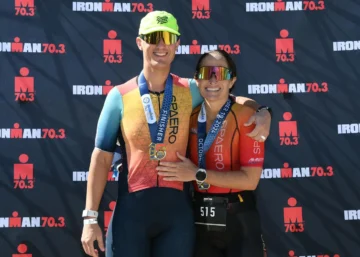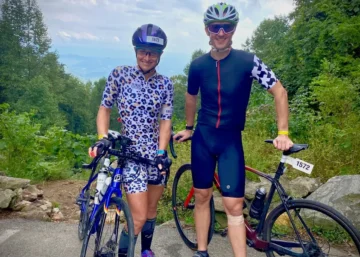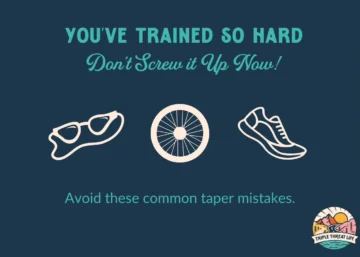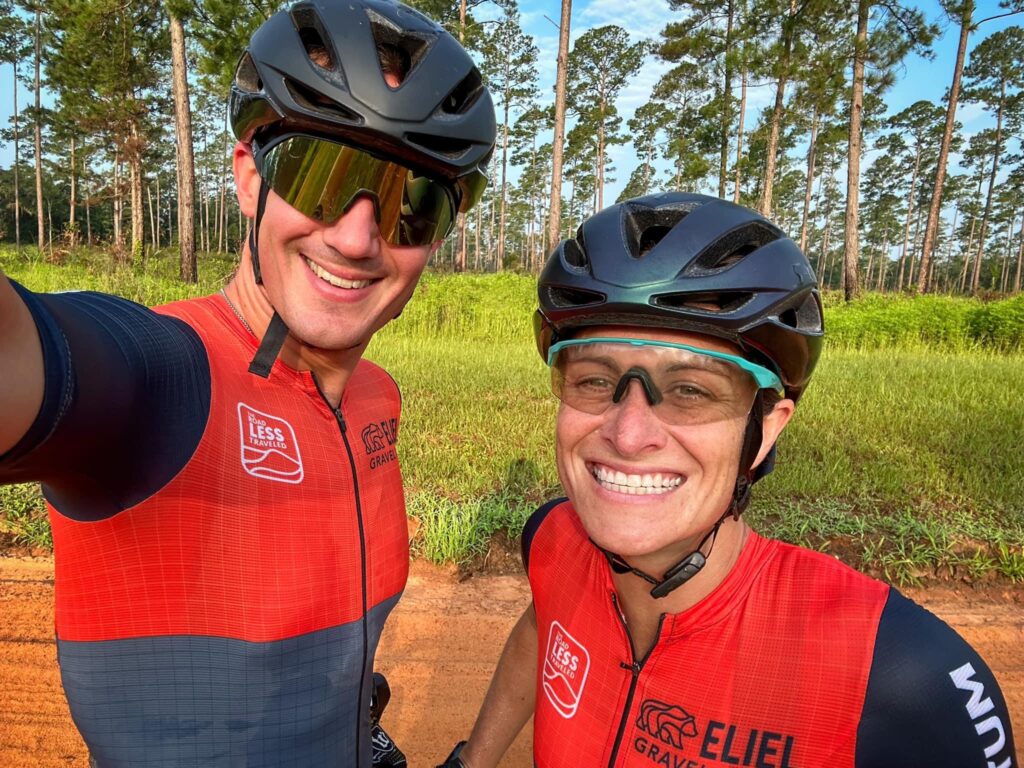
After being horribly sick for the past three days, and missing three workouts in a row (likely the most ever in my life), I’ve started thinking about what the perfect off-season looks like. And the truth is- I have no freaking clue!
Actually, I do. There is no such thing as perfect. Not in life, nor in triathlon training, and if you’re constantly striving for perfection, you’re going to be disappointed.
Wait a second… We shouldn’t strive for perfection? GASP. Admittedly, I am a perfectionist, and I’m here to tell you that there is no such thing.
Let me explain. The notion of something being perfect means that it’s without flaw or defect. For an individual, that might mean that your actions or performance have attained a level that cannot be exceeded. Do you know anybody like that? No, because it’s not humanly possible to be perfect. Even professional athletes aren’t perfect. There’s always room for improvement, and we’re constantly pushing the boundaries of what humans are capable of. That’s what makes sports so exciting!
So then why do we expect that we can achieve the perfect off-season, the perfect training cycle, or the perfect race? Perfect doesn’t actually exist. It’s just a construct of the mind.
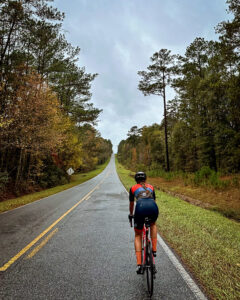 I read an article in Psychology Today that explains it pretty well. “In our culture, we move relentlessly toward greater emphasis on achievement, productivity, and goal attainment. We tend to measure our lives in terms of success and achievement and lose perspective on what it may mean to live well…”
I read an article in Psychology Today that explains it pretty well. “In our culture, we move relentlessly toward greater emphasis on achievement, productivity, and goal attainment. We tend to measure our lives in terms of success and achievement and lose perspective on what it may mean to live well…”
“Could you imagine looking at a magnificent rainbow and complaining that the width of one color was narrower than another? Not only would that be ridiculous, we’d be ruining the splendor of the moment. And yet that is exactly what we do when we judge ourselves for our imperfections.”
I have a quote on a sign in my bedroom that says, “Life doesn’t have to be perfect to be beautiful.” It’s a good reminder.
Instead of trying to be perfect, or make things perfect, I strive for improvement. That means setting clear goals, making a plan to achieve them, working towards continuous growth, and being able to adapt when things don’t go as planned.
I’ve had to do quite a bit of that last one recently. After my first full distance race at IRONMAN Florida in November 2023, I felt great. Amazing even. I wasn’t sore or tired. Motivation was extremely high, so after about two weeks of recovery with easy workouts, I jumped back into regular training.
Interestingly enough, week three was when it started going downhill. Once I was fully back into a regular training cycle, things just didn’t feel quite right. I wasn’t excited about the things that normally make me happy. I was irritable; any small thing drove me crazy. It was all the typical signs of overtraining, but I wasn’t over-trained.
Then I remembered other triathletes talking about post-Ironman blues. Initially, I always thought that meant they were sad or depressed because the big event was over and they didn’t have anything to look forward to anymore. But now, I’m beginning to think it goes a bit deeper than that.
After the race, I remember my coach saying that even if you feel recovered, and all of the metrics indicate you’re recovered, doing an event like an Ironman causes deep-seated fatigue that doesn’t always present itself on the surface. For me, it was that, but also I think I hadn’t quite recovered mentally.
My husband is a doctor, and he explained that racing an event as long as an Ironman causes a flood of adrenaline in the body. It’s incredible, hard, amazing, exhausting, and exciting. It’s an emotional roller coaster, and that adrenaline can take up to 10 days to fully leave your system. Stress is stress, and that means even good stress, like getting married, moving, or buying a house (all of which we’ve done recently).
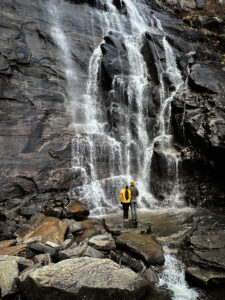 So, we took a step back and over Christmas vacation I did whatever workouts I felt like doing. We did a couple of 3-mile runs. We did a 2-hour ride to a waterfall. We hiked a lot. We were active and we exercised, but it wasn’t the same regular routine. There was no structure, and we just had fun. By the end of our 10-day trip, I started feeling more like myself again. It was time to start a new year!
So, we took a step back and over Christmas vacation I did whatever workouts I felt like doing. We did a couple of 3-mile runs. We did a 2-hour ride to a waterfall. We hiked a lot. We were active and we exercised, but it wasn’t the same regular routine. There was no structure, and we just had fun. By the end of our 10-day trip, I started feeling more like myself again. It was time to start a new year!
And then I got sick. Pretty badly sick, like worse than “the 2020 sickness that shall not be named.” A bit frustrating to say the least, especially when I’d just started feeling better. And I’ve got some big goals to work on with running this off-season. But it was another opportunity for reflection about what the perfect off-season looks like.
We couldn’t do our typical bike ride and long run over the weekend, but since being outdoors always makes me feel better, we decided to work in our backyard. We stained the wood fence, hung up patio lights, put in a fire pit, and built above ground planters for lettuce, strawberries, and herbs. It looks amazing! And now I’m finally feeling better enough to start training again.
If you started reading this hoping to learn some actual tips to achieve the perfect off-season, I hope you’re not too disappointed. But I can leave you with this. While it’s far from perfect, there are a few rules we have for the off-season.
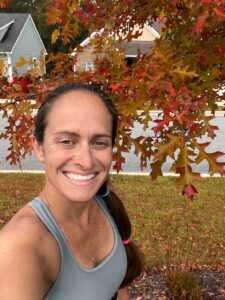 1- Off-season is a break from regular scheduled workouts, but not a break from physical activity- We typically follow our regular schedule of swimming on M/W/F and bike/run on T/TH, but there’s a lot more flexibility to move things around depending on how we feel. Don’t feel like swimming? No problem, we do a strength session at the gym instead. Want to run outside instead of doing a trainer ride? That’s fine too.
1- Off-season is a break from regular scheduled workouts, but not a break from physical activity- We typically follow our regular schedule of swimming on M/W/F and bike/run on T/TH, but there’s a lot more flexibility to move things around depending on how we feel. Don’t feel like swimming? No problem, we do a strength session at the gym instead. Want to run outside instead of doing a trainer ride? That’s fine too.
#2- Keep swimming, but keep it short and use all the toys- It’s too tempting to stop swimming, especially if you don’t have an upcoming race on the calendar, but I’ve found this is a mistake. It’s really hard to get back into the swing of things once the race season starts up again, so I find it’s easier to keep going to the pool, even if you make the workouts short. Also, my rule is- use all the toys! If you want to use your pull buoy, paddles, fins, and snorkel all at once, go for it. Whatever keeps it fun.
#3- Mix it up on the weekends- We still do a long ride and long run on the weekends, but we mix it up. We might do a gravel ride or ride our road bikes. It’s nice to change up my bike position, and it’s a great way to strengthen muscles I don’t normally use. Riding my road bike really works my hamstrings! Also, the cooler weather is the perfect time to slow down a bit and explore, instead of always riding for a certain speed or distance.
#4- No racing- Off-season, for us, means no racing- in triathlons at least. We might do a run race if we feel inspired, but taking a break from racing is important, both mentally and physically. You can even do a race and not actually race it. GASP. This weekend, we’re going to run a 15K in town. Matt’s still working back after an injury, and I’m working on low heart rate stuff, so we’re going to use it as a long run with friends, for fun. GASP AGAIN. You can do something just to have fun.
#5- Set an off-season goal- This is a big one for me. I can’t just wander around, all willy nilly, working out without a purpose. So, at the start of each off-season, my coach and I get together and select something to work on. I always end up picking a running goal, because that’s the sport I have the least experience in. I’m close to running my stand alone half marathon time at the end of a 70.3, so that’s the eventual goal. To achieve that means I need to put in another big aerobic run block. Lots of running, at VERY low heart rate, which inevitably means some walking is involved. GASP. It’s not super exciting stuff, but it pays off big if you can stick with it long enough. I’m about seven weeks in at this point.
Which leads me to my next post…
